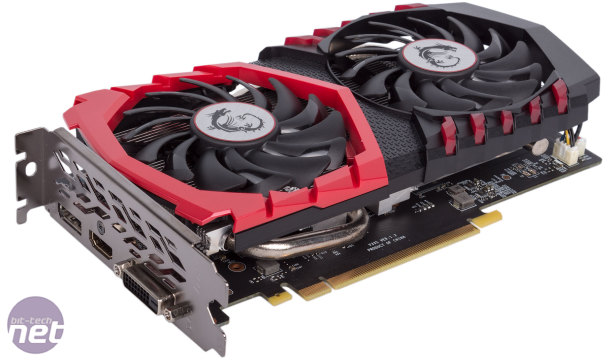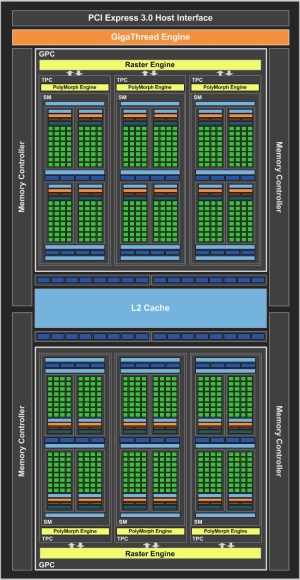MSI GeForce GTX 1050 Ti Gaming X 4G Review
November 7, 2016 | 11:04

MSI GeForce GTX 1050 Ti Gaming X 4G Review
Manufacturer: MSIUK price (as reviewed): £163.95 (inc VAT)
US price (as reviewed): $164.99 (ex Tax)
Since the launch of the GTX 1080, Nvidia has gradually been filling out its product stack with Pascal GPUs. A couple of weeks ago, it released two cards that finally brought the architecture to mainstream prices: the GTX 1050 Ti, with an MSRP starting at £139 including VAT, and the GTX 1050 with a starting MSRP of £115 including VAT.
While there are baseline specifications for the two parts, there are no true reference designs or Founders Edition cards so retailer shelves are full instead of custom designs from all the usual Nvidia partners. The card we're looking at today falls towards the premium side of things (at least as far as a GTX 1050 Ti can be called premium), but first we'll do a quick run down of the GTX 1050 Ti and GTX 1050 generally and how they compare to the rest of the stack.
For these cards, Nvidia is introducing a new GPU: GP107. Relative to previous Pascal parts, it's tiny: just 132mm2 and filled with 'only' 3.3 billion transistors. What's most interesting is that Nvidia has shifted here from TSMC's 16nm FinFET process to Samsung's 14nm FinFET manufacturing node. It's currently unclear whether older Pascal parts will be refreshed with Samsung-produced dies, but it's an interesting move either way and perhaps not surprising given the supply issues that plagued Nvidia with the GTX 1080 and GTX 1070.
Those transistors are arranged into two Graphics Processing Clusters, each of which is home to three of Nvidia's Streaming Multiprocessors (SMs). As ever, there are 128 CUDA cores and 8 texture units per Pascal SM, which gives the GTX 1050 Ti 768 and 48 of these respectively since it uses a fully enabled GP107. The GTX 1050, meanwhile, has one SM disabled dropping the respective counts to 640 and 40. While clock speeds are well in excess of 1GHz, they're lower than we've seen from any Pascal parts so far. The GTX 1050 Ti has a base clock of 1,290MHz (1,392MHz boost) while the GTX 1050 looks to make up its performance deficit with slightly higher clocks of 1,354MHz base and 1,455MHz boost.
Elsewhere, the GPUs are largely the same. There are four 32-bit memory controllers, giving us a 128-bit interface. Each controller is tied to 8 ROPs, so 32 total, and 256KB of L2 cache for a total of 1MB. The GTX 1050 Ti has a full 4GB of GDDR5, which is interesting in that it is actually more than the card above it in the stack, the GTX 1060 3GB, while the GTX 1050 is limited to just 2GB. In both instances, a 1.75GHz memory clock nets us a 7Gbps effective bandwidth and 112GB/sec of total memory bandwidth – fairly narrow by today's standards, but as Pascal parts the two cards do at least benefit from Nvidia's four generation delta colour compression for frame data.
A 75W TDP for both parts means no external PCI-E power connector is needed, although many partners do produce versions that include one in the interest of hitting higher clock speeds and hopefully providing better overclocking potential. The reference display outputs include one HDMI, one DisplayPort and one DVI and SLI is not supported.
| Nvidia GeForce GTX 1070 8GB | Nvidia GeForce GTX 1060 6GB | Nvidia GeForce GTX 1060 3GB | Nvidia GeForce GTX 1050 Ti 4GB | Nvidia GeForce GTX 1050 2GB | |
| GPU | |||||
| Architecture | Pascal | Pascal | Pascal | Pascal | Pascal |
| Codename | GP104 | GP106 | GP106 | GP107 | GP107 |
| Base Clock | 1,506MHz | 1,506MHz | 1,506MHz | 1,290MHz | 1,354MHz |
| Boost Clock | 1,683MHz | 1,708MHz | 1,708MHz | 1,392MHz | 1,455MHz |
| Stream Processors | 1,920 | 1,280 | 1,152 | 768 | 640 |
| Layout | 3 GPCs, 15 SMs | 2 GPCs, 10 SMMs | 2 GPCs, 9 SMMs | 2 GPCs, 6 SMMs | 2 GPCs, 5 SMMs |
| Rasterisers | 3 | 2 | 2 | 2 | 2 |
| Tesselation Units | 15 | 10 | 9 | 6 | 5 |
| Texture Units | 120 | 80 | 72 | 48 | 40 |
| ROPs | 64 | 48 | 48 | 32 | 32 |
| FP64 Performance | 1/32 FP32 | 1/32 FP32 | 1/32 FP32 | 1/32 FP32 | 1/32 FP32 |
| Transistors | 7.2 billion | 4.4 billion | 4.4 billion | 3.3 billion | 3.3 billion |
| Die Size | 314mm2 | 200mm2 | 200mm2 | 132mm2 | 132mm2 |
| Process | 16nm | 16nm | 16nm | 14nm | 14nm |
| Memory | |||||
| Amount | 8GB GDDR5 | 6GB GDDR5 | 3GB GDDR5 | 4GB GDDR5 | 2GB GDDR5 |
| Frequency | 2GHz (8Gbps effective) | 2GHz (8Gbps effective) | 2GHz (8Gbps effective) | 1.75GHz (7Gbps effective) | 1.75GHz (7Gbps effective) |
| Interface | 256-bit | 192-bit | 192-bit | 128-bit | 128-bit |
| Bandwidth | 256GB/sec | 192GB/sec | 192GB/sec | 112GB/sec | 112GB/sec |
| Card Specifications | |||||
| Power Connectors | 1 x 8-pin | 1 x 6-pin | 1 x 6-pin | N/A | N/A |
| Stock Card Length | 267mm | 249mm | N/A | N/A | N/A |
| TDP | 150W | 120W | 120W | 75W | 75W |
The cards are said to be suitable for 60fps gameplay in modern titles with high or medium settings at 1080p, and Nvidia's target audience is those running off-the-shelf PCs that want a quick and hassle-free upgrade from integrated graphics, for example, or those with less budget to put towards PC hardware who are only able to upgrade every three-to-four years. As such, It touts that performance should be three times that of a GTX 650.
With that out the way, let's take a closer look at what MSI is offering with its GTX 1050 Ti Gaming X 4G.

MSI MPG Velox 100R Chassis Review
October 14 2021 | 15:04










Want to comment? Please log in.